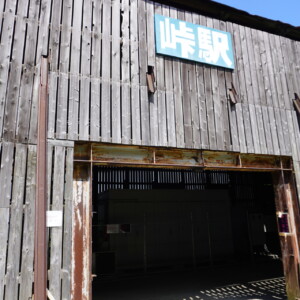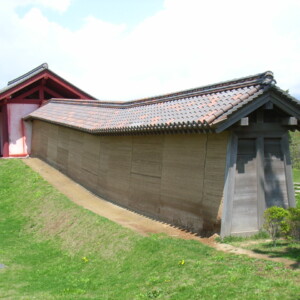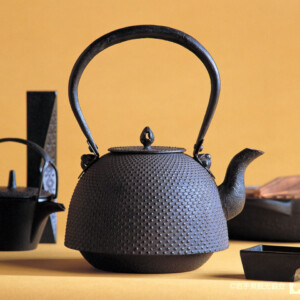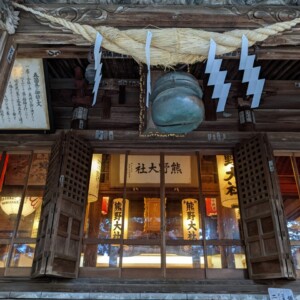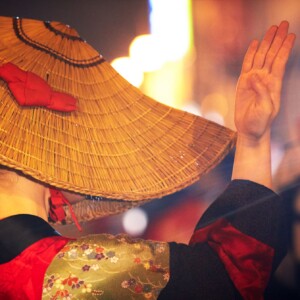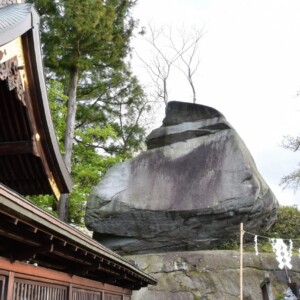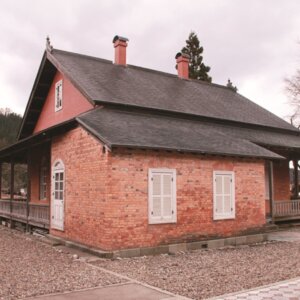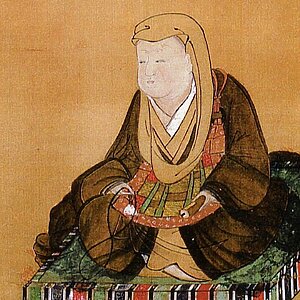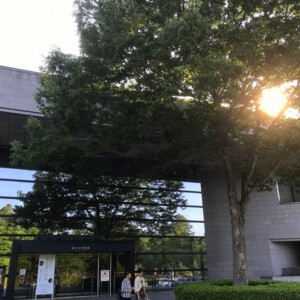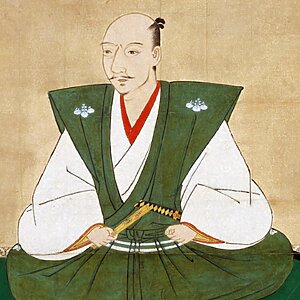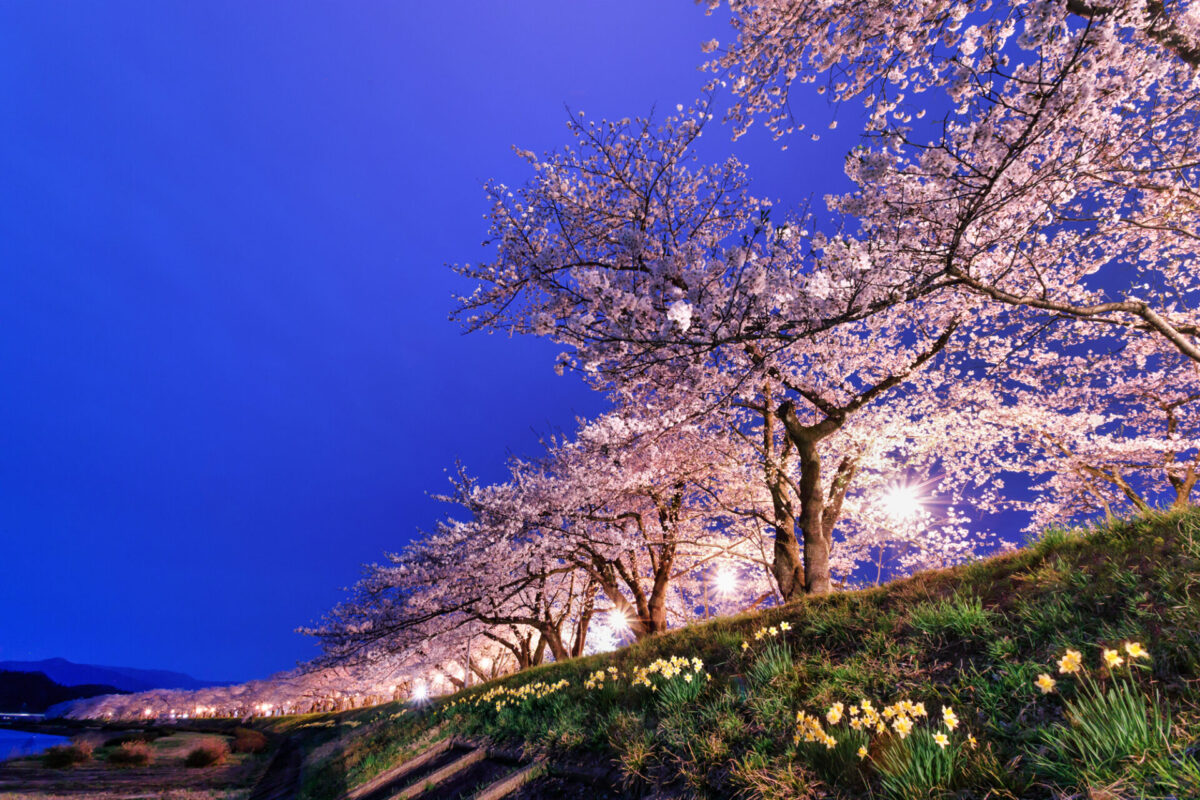
Kakunodate, which was built by the Ashina clan in the Edo period, began with the Tozawa clan during the Sengoku period [2]
table of contents
- 1 Kakunodate was a small village along a highway that crossed the Ou Mountains until the Sengoku period.
- 2 The Life Insurance Road opened by Sakaue Tamuramaro during the Heian period
- 3 Tozawa Iemori, a town built on the north side of Kakunodate Castle
- 4 Even after the abandoned castle, Ashina Yoshikatsu built the foundation of Kakunodate as the essential lord of the castle.
- 5 After the flood, the south side of the castle was forced to turn into a castle town
- 6 The Satake Kita family, who succeeded the Ashina clan, inherited the town division of the Ashina clan.
- 7 "Satake Kita Family Diary" written every day by the head of the Satake family.
- 8 Kakunodate, where many cultures blossomed during the Satake Kita family era
Kakunodate Samurai- dori," which still retains its townscape built during the Edo period , spring cherry blossoms, the " Konodate Festival Yama Event Hirokama Pillow, an intangible folk cultural property designated inboku city , is the largest tourist destination in Akita Prefecture, attracting tourists from all over the country.
Kakunodate was a small village along a highway that crossed the Ou Mountains until the Sengoku period.
The name Kakunodate appears in history in 1423 (or 1424), when the 13th lord of the Tozawa clan, who had a castle (Konya Castle) in Kadoya (Konya Castle/Nishikimonya, Senboku City), attacked Komatsuyama Castle, which had been ruled by a small local clan (also known as the Suga clan) , changed his castle from Komatsuyama Castle Kakunodate Castle
It is unknown when and who built Komatsuyama Castle. Furthermore, there seems to be no clues as to why the name was changed to "Kakudate (Kangdong)" later. However, this area was originally a bustling transportation hub with the Obonai Highway (later Kakunodate Kaido) that crossed the Ou Mountains.
The Life Insurance Road opened by Sakaue Tamuramaro during the Heian period
The Life Insurance Kaido is an old highway that is said to have been opened by Sakanoue Tamuramaro, the Sakanoue Tamuramaro, who marched in the Emishi (the people who lived in the Tohoku region/named by the Yamato Imperial Court during the Heian period as Seiitai Shoguns.
The final destination of the Life Insurance Cooperative Road is Ogakushuku (Daisen City) on the Ushu Kaido Road, passes through Kakunodate, then from Life Insurance Cooperative, passes through Kunimi Pass (960m above sea level/near Seniwa Pass), then passes through Shizukuishi (Shizukuishi Town, Iwate Prefecture) of the Nanbu Domain, then heads towards Morioka (Morioka City, Iwate Prefecture). This highway is one of the few roads that can cross the Ou Mountains, so there is a lot of traffic and people and supplies, and during the Edo period, the Kubota Domain set up a checkpoint within the life insurance insurance (within the life insurance insurance insurance in the life insurance in the Tazawako-cho, Senboku City), located on the border with the Nanbu Domain. It is believed that the Tozawa clan, who came to Senboku from Shizukuishi Tozawa (Shizukuishi/Furukan, Shizukuishi-cho, Iwate Prefecture) in Mutsu Province (Munokuni/Iwate Prefecture, etc.), to the land of Senboku, is also walking along this highway and crossed the mountain pass.
Tozawa Iemori, a town built on the north side of Kakunodate Castle
Tozawa Iemori, who entered Kakunodate in 1423, developed a castle town on the north side of Kakunodate Castle (now the ruins of the ancient castle mountain castle = Furushiro Yamashiroato), which was on the top of the mountain, on the opposite side of the current Castle Town Street. It is said that this is strategic, but the details are unknown.
The Tozawa clan was based at Kakunodate Castle for about 180 years and ruled the Senboku region, but in 1602, Masamori (1585-1648), the 21st head of the family, was appointed by Tokugawa Ieyasu the Matsuoka Domain in Hitachi Province (Takahagi City, Ibaraki Prefecture), and left Kakunodate.
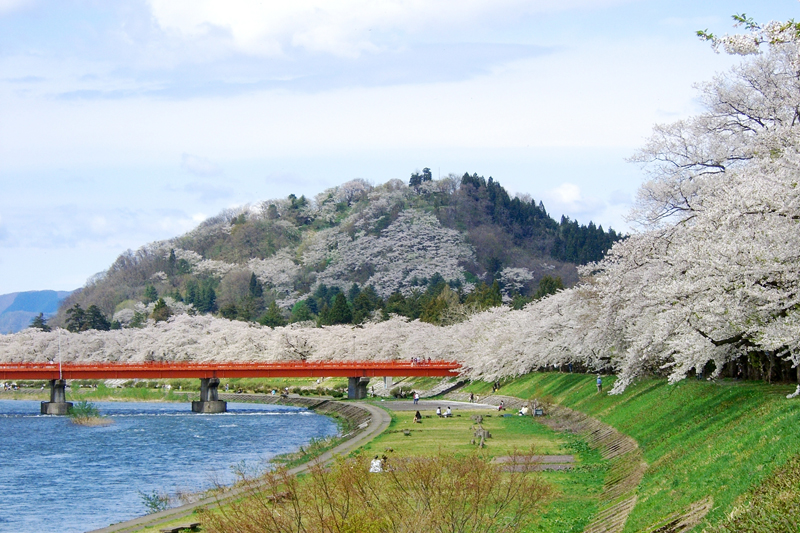
Even after the abandoned castle, Ashina Yoshikatsu built the foundation of Kakunodate as the essential lord of the castle.
After Tozawa Masamori headed to Hitachi Province, the Satake clan, who came to Akita from Hitachi Province, founded the Kubota Domain, and the Senboku region also entered its control. The Kubota Domain built its main castle in Kubota (Chiaki Park, Akita City) and Kakunodate Castle was the branch castle. Therefore, a castle was required, and Ashina Yoshikatsu, the younger brother of Satake Yoshinobu (1570-1633), the first lord of the Kubota domain, and was adopted by the Ashina clan of Aizuwakamatsu (Aizuwakamatsu city, Fukushima prefecture), was sent to Kakunodate.
Ashina Yoshikatsu initially housed the castle on the summit of Komatsuyama, built by the Tozawa clan, and the castle town remained the same. Kakunodate Castle was abandoned due to One Country and One Castle Order issued by the Edo Shogunate in 1615 However, it was no longer an ostensibly branch castle, but in reality the Ashina clan was the castle lord, and the castle town was still functioning.
After the flood, the south side of the castle was forced to turn into a castle town
In 1619, a major flood struck Kakunodate. The castle town was flooded and the disaster occurred, with vassals and townspeople also suffering deaths. Therefore, the Ashina clan made a large-scale reconstruction plan, moving the castle town on the north side of the castle to the south side, and in 1620 began construction of the new castle town. At the same time, the castle on the summit was relocated to the south foot of the castle, with the order by the shogunate to destroy it.
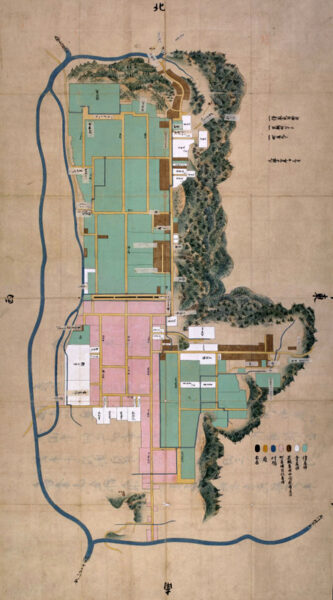
Kakunodate Castle is located to the north, and the townscape was created on long, narrow flat lands, about 500 meters east and west and 2,000 meters north and south. The Hinokinaigawa River to the western end the Tamagawa River flows to the southern end On the east side was a hilly area called Tonoyama
the 21-cho of Kakunodate was created, which remains today On the north half is the samurai residence (Uchimachi) and on the south side (Outto Town) is a commercial area and machiya houses. The ruins of Kakunodate Castle, which had been abandoned, seem to have come to be called Furushiroyama from
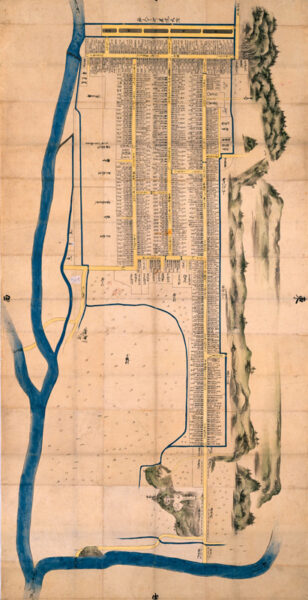
List of 21 Kakunodate Towns
- Higashi Katsurakucho
- Tamachi Kamicho
- Tamachi Shimocho
- Takewaracho
- Kobito Town
- Walking town
- Kawaramachi
- Omotemachi Kamicho
- Omotemachi Shimocho
- Yamanemachi
- Hosogoe Town
- Uramamachi
- Iwase Town
- Shimoiwase Town
- Shimoshinmachi
- Kamishinmachi
- Nishikatsurakucho
- Nakamachi
- Nanakamachi
- Shimonakamachi
- Yokomachi
*Current place names are marked by Kakunodate Town before the town name.
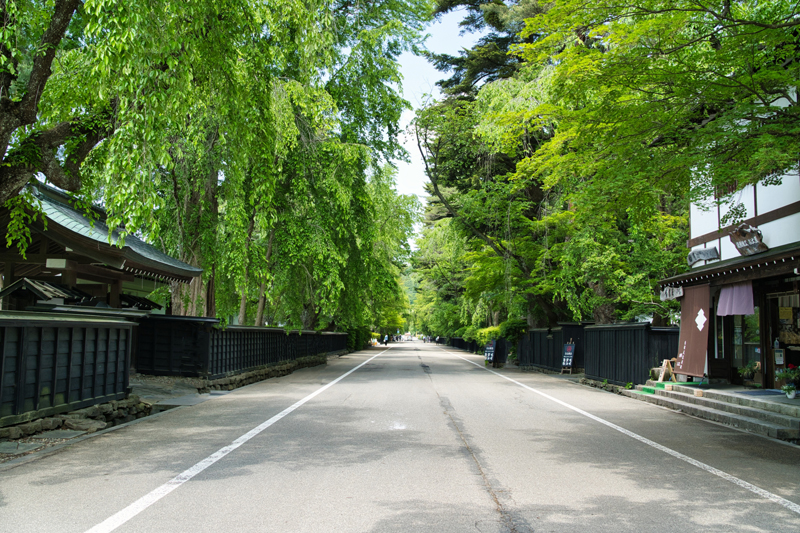
Samurai Mansion Street Information
- Facility name: Samurai-yashikidori
- Cultural Property Designation: Designated as a district for the important traditional buildings conservation of the Kakunodate Town Kakunodate
- Location: Omotemachi Shimocho, Omotemachi Kamicho, Higashikatsurakucho, Uramachi, Uramachi
- Phone number: 0187-42-8280 (Tazawa Lake and Kakunodate Tourism Association)
- URL: Samurai Mansion Street
- access:
- Public Transportation: Approximately 20 minutes on foot from Akita Shinkansen, JR Tazawako Line, Akita Uchiriku Longitudinal Railway Kakunodate Station
- Car/Approximately 39 minutes from the Akita Expressway Kyowa IC via National Routes 341 and 46
Google Map
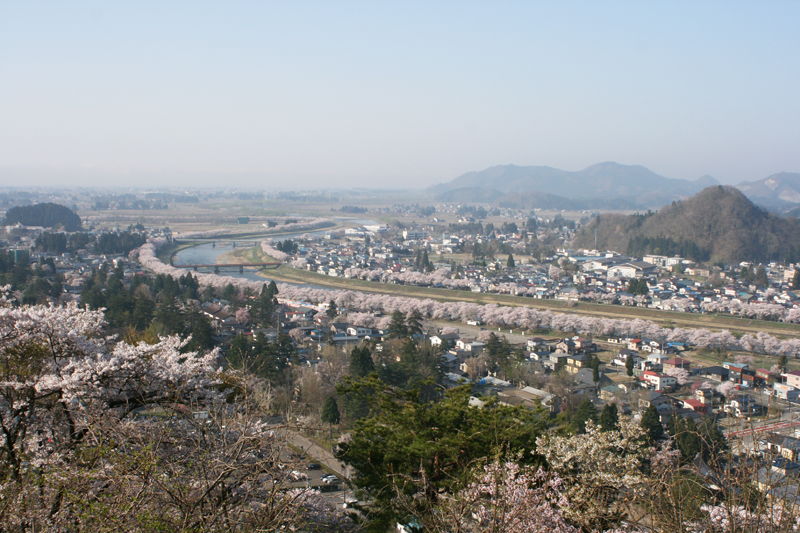
Furushiroyama Park (Kadodate Castle Ruins) Information
- Facility name: Furushiroyama Castle Ruins (Furushiroyama Park)
- Location: Furushiroyama, Kakunodate-cho, Senboku-shi, Akita Prefecture
- Phone number: 0187-54-2700 Senboku City Tourist Information Center "Kokedate Ekimaezo"
- Freedom to stroll
- URL: Furushiroyama Park
- access:
- Public Transportation: Approximately 40 minutes on foot from Akita Shinkansen, JR Tazawako Line, Akita Uchiriku Longitudinal Railway Kakunodate Station
- Car/Approximately 35 minutes from Kyowa IC on the Akita Expressway
Google Map
The Satake Kita family, who succeeded the Ashina clan, inherited the town division of the Ashina clan.
After Yoshikatsu, Ashina's family was not blessed with a successor, and after three generations the family was cut off. Therefore, in 1656, close relatives of the Satake clan , Satake Kita Satake Yoshinori (in-chika/Yosichika/1619-1702), entered Kakunodate as a koto (tokoro Azukari/position overseeing the position of office).
The Satake Kita family was a family that originally followed the Seiwa Genji, who was the leader of the Yamato Imperial Court during the Heian period, and is based on the same bloodline as Minamoto Yoritomo. The Satake clan was originally a powerful clan in Hitachi Province (Ibaraki Prefecture), and the family that was entrusted with the Kakunodate were located north of Ota Castle, the castle of the original Satake clan (Hitachi Ota City, Ibaraki Prefecture), and they came to be called the Kitaya.
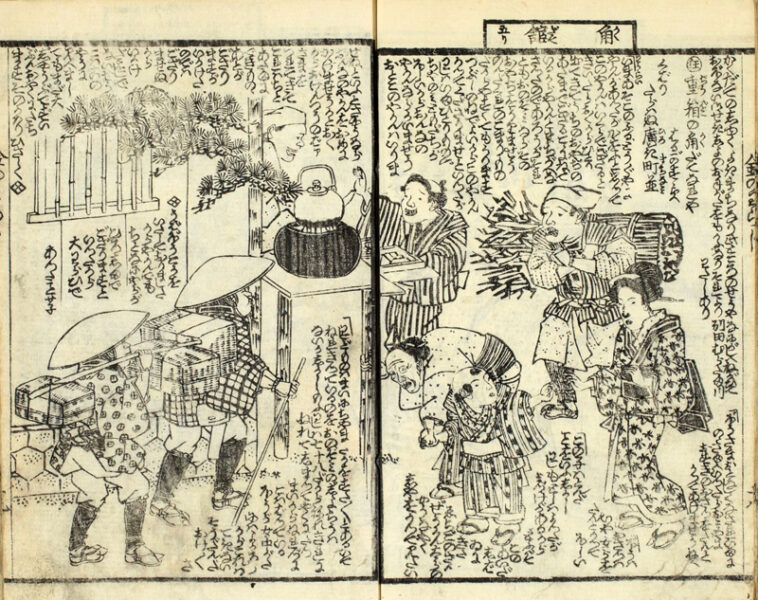
Kakunodate the Life Insurance Kaido Road and was located at the entrance to the Ani Kaido Road heading towards the Ani Dozan which was the source of the Kubota Domain As a result, the town under the Satake Kita family developed greatly. From Yoshinin onwards, the Satake Kita family ruled Kakunodate for 11 generations from Yoshinao (1848-1909).
"Satake Kita Family Diary" written every day by the head of the Satake family.

The Satake Kita family continued to maintain a custom of past heads of families keeping diaries every day until 1894 (Meiji 27). the Satake Kita Family Diary or the Kita Family Diary , ranged from 220 years from 1894 (Meiji 27), when the second generation of the Satake Kita Family Kakunodate, Tosai Isai Mei (Yokiaki/7th generation of the Kubota Domain, a different person) to the 11th generation of Tosai Meiro (Meiji 27). Some of the items are thought to have been written by vassals, but most are written by successive heads of family members.
The contents cover everything from the life of the Kita family, official duties in the domain, vassals, festivals, annual events, customs, and other topics, as well as the standard weather for the day in the diary. The Satake Kitaya Diary (Kitaya Diary) is an intangible folk cultural property designated as Akita Prefecture, as a unique historical document that lets you learn about everyday life in the Edo period.
Kakunodate, where many cultures blossomed during the Satake Kita family era
During the Satake Kita family, events began such as the Yama Events of the Kakunodate Festival, which is designated as a nationally designated Important Intangible Folk Cultural Property and UNESCO Intangible Cultural Heritage, and the winter tradition, "Fire-Ranguage Pillow" (Semboku City designated Intangible Folk Cultural Property), and the Kakunodate also blossomed in Akita Ranga It is said that the first of the "Cherry Blossom Lined Trees" in the country, where the entire Kakunodate is dyed cherry blossoms in the spring, was the first three shidare cherry trees that the wife of Tosaimei, the second generation of the Kakunodate Satake Kita family, brought with her when she marries her from Kyoto.
We will introduce events, entertainment, and culture that are said to have started at Kakunodate during the Satake Kita family era, in "Senboku City's Highlights 3."


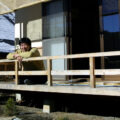


![Kakunodate, a castle town where flowers were opened during the Satake Kita family era [Senboku City highlights 3] 02 Kakunodate Festival_Akita Fan](https://jp.neft.asia/wp-content/uploads/2025/07/171a9cc7c9ae28ea78011ca1438448b1-150x150.jpg)
![[The Mystery of Kamakura] Are Kamakura, a winter feature of Akita Prefecture, connected to the Kamakura Shogunate? Yokote 4_Travel Tohoku 1000](https://jp.neft.asia/wp-content/uploads/2025/08/a2674c8c7497fa159899e9b2a761c38f-150x150.jpg)
![[Recommended Autumn Festivals: Akita Edition] 3 History and Traditional Akita Autumn Festivals Akita Catch](https://jp.neft.asia/wp-content/uploads/2024/08/979a38324ff45520e274bdc0cee6df5e-150x150.jpg)
![[Semboku City, Akita Prefecture] It's best to see both the man-made autumn leaves of Kakunodate and the natural autumn leaves of Dakigaeri Valley. Higashishorakucho_Semboku City](https://jp.neft.asia/wp-content/uploads/2025/08/c70a99377a4bb64de3c1f83babf0ea49-150x150.jpg)
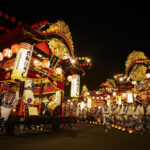
![The Tozawa clan, which first owned the Senboku Kakunodate, rose to the lord of the Shinjo domain, and was the winner of the daimyo [Senboku City highlights 1] Samurai Mansion Cherry Blossoms_Tazawako Kakunodate Tourist Association](https://jp.neft.asia/wp-content/uploads/2025/07/3fef851952b498c8632b4304dc38a889-150x150.jpg)
![The history of Kamiyama, which developed as a castle town and post town with hot springs [Kamiyama City, Yamagata Prefecture] Kaminoyama Castle](https://jp.neft.asia/wp-content/uploads/2023/08/22726859_m-150x150.jpg)
![Who is Odano Naotake, a genius painter who was a samurai but created Japan's first Western film, Akita Ranga? [Akita Prefecture] Odano Naotake "Shinobazu Pond Diagram" by Akita Museum of Modern Art](https://jp.neft.asia/wp-content/uploads/2025/05/607415f6ab92e9af3e5383631e9ca4ac-150x150.jpg)

